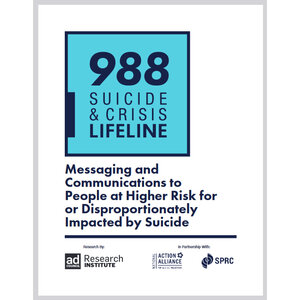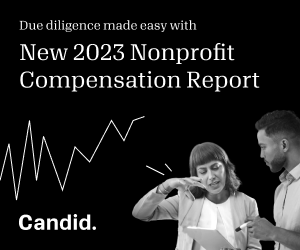988 outreach and messaging: Communications research and testing key to mental health support

Warning to the reader: This article discusses various experiences that you may find yourself identifying with while reading. Should you need emotional or mental health-related support, please contact 988 or a local trusted support.
The mental health crisis in our country has been simmering for some time, exacerbated by the pandemic, and it’s nearing the boiling point.
Addressing mental health has become a priority by the federal government and organizations across the United States, all working to address the crisis and the numerous systemic challenges that contribute to it. Updating the 10-digit National Suicide Prevention Lifeline to 988 to facilitate access to 24/7 crisis care, is one such effort.
Since its launch in July 2022 through July 2023, data show that 988 has received almost five million contacts (calls, chats, texts). But no national research existed on messaging around this new service: awareness of it, trust (or lack of) in it, or how to reach key populations with impactful messaging.
Determining the most effective messaging for 988 awareness is no easy task. For one, mental health struggles—and in particular, suicide—is rarely caused by a single event or circumstance. Many individual, relationship, community, and societal conditions or factors contribute to suicidal ideation. Some populations experience more negative social conditions and factors related to suicide, like racism and discrimination, economic hardship, poverty, limited affordable housing, lack of education opportunities, and barriers to physical and mental healthcare access. In addition, some populations may have disproportionately higher or rising rates of suicide, suicide attempt, or suicidal ideation than the general population.
At the Ad Council, we’ve long made mental health a top priority, working to foster a society that is more open and proactive about mental health by addressing the unique needs of distinct audiences (adults, young adults and teens, middle schoolers, veterans). With newly launched formative research through the Ad Council Research Institute (ACRI), in partnership with Action Alliance and Suicide Prevention Resource Center (SPRC) and supported by SAMHSA (Substance Abuse and Mental Health Services Administration), we’re taking this initiative a step further, to understand the awareness, perspectives, and current and potential usage of the 988 Suicide & Crisis Lifeline among eight key populations that are at higher risk for or disproportionately impacted by suicide:
- American Indian/Alaska Native youth and young adults (ages 13-34)
- Asian American, Native Hawaiian, and Pacific Islander youth and young adults (ages 13-34)
- Black youth and young adults (ages 13-34)
- Hispanic youth and young adults (ages 13-34)
- Individuals who have attempted suicide or experienced serious thoughts of suicide during their lifetime (ages 13+)
- LGBTQIA+ youth and adults (ages 13-49)
- People with disabilities (ages 13+)
- Rural older men (ages 49+)
While our research identified the critical need for culturally sensitive, responsive, and effective 988 communications unique to each of these audiences, we also noticed similarities across cohort groups on general messaging principles and themes. Based on our findings from our study, 988 Suicide & Crisis Lifeline: Messaging and Communications to People at Higher Risk for or Disproportionately Impacted by Suicide, we recommend the following guidelines when crafting messaging and developing campaigns to these key populations.
1. Focus on what individuals need most when struggling: someone to talk to at any time.
When struggling with mental health or in a crisis situation, the populations we surveyed all wanted one thing: someone to talk to 24/7. Above all else, messaging about 988 must fill a void for people struggling with mental health: There is always someone available to talk with, to confide in, and to receive trained help from, or who will simply listen.
2. Explain what 988 really is and who is involved.
While about half of study participants said they had heard about 988, the depth of their understanding was limited. There’s a substantial opportunity to build broad awareness of what services it provides and who is involved in helping them, including their skills, their trustworthiness, and support they can offer. This includes highlighting that 988 isn’t only a last resort, that a person doesn’t have to be in crisis to reach out. Anyone seeking guidance or support or just wanting to talk can (and should) contact 988 at any time.
3. Highlight the human on the other end of the line.
If people are going to use 988, they want to talk to someone who listens and isn’t judgmental. They want someone they can talk to about what’s happening to them in real life. This is also the messaging that most resonated with participants in the message frame portion of the study. Messaging should steer clear of clinical wording and educate people on what they’re interested in: mental wellness, how to handle situations involving mental health struggles and/or crises (for themselves or others), and how to talk with and listen to others who are struggling.
4. Address the factors that make people skeptical or hesitant to use 988.
Young audiences (ages 13-34) in particular are concerned about who is on the other line, and if that person can really relate to and understand their situation and can be trusted. Older participants (49+) were also concerned about privacy and confidentiality. Messaging campaigns need to instill trust and alleviate concerns among potential users.
5. Deliver messages through trusted messengers and sources.
Younger populations were more likely to say they’d search Google for mental health resources rather than immediately calling the hotline. They were also more likely to get information from or reach out to their friends or family. By contrast, older participants were more likely to get information or support from a spouse/partner. It’s key for organizations to reach people where they are and through those they trust in order to truly inform people about 988.
When crafting culturally sensitive, responsive, and effective 988 communications to each of these audiences, it’s crucial that communicators and marketers take audience-specific nuances into account. And at the end of the day, recognize that all audiences, when struggling with mental health, want one thing: a trustworthy, unbiased person to talk to, any time, day or night.
Heidi Arthur is chief campaign development officer at the Ad Council. Heidi brings together leading creative agencies, corporate brands, media and technology platforms, and nonprofit and government partners to drive public education, awareness, and action. She has more than 25 years of experience creating change around pressing social issues.








To improve the mental health of children and youth, invest in grassroots groups